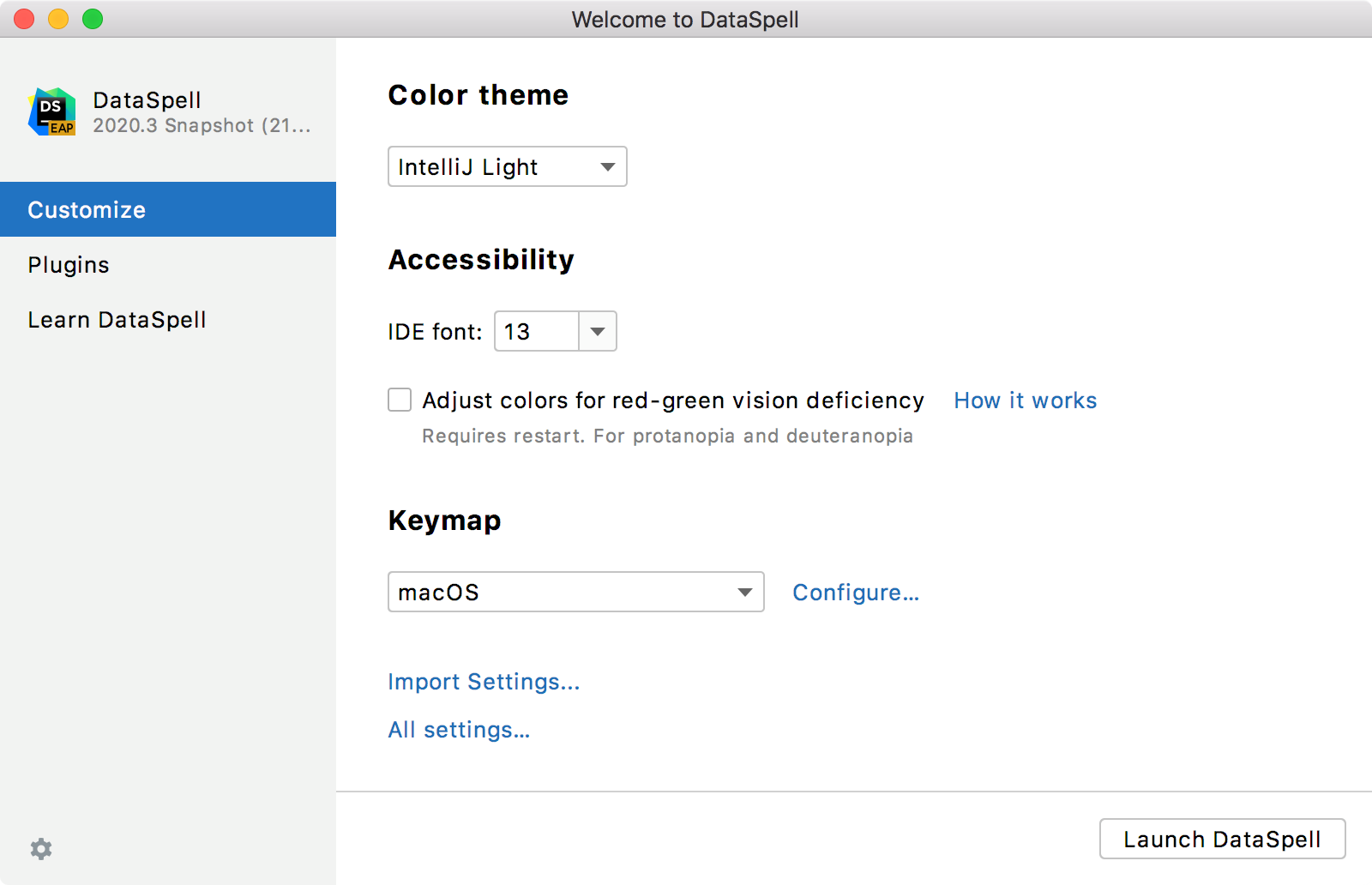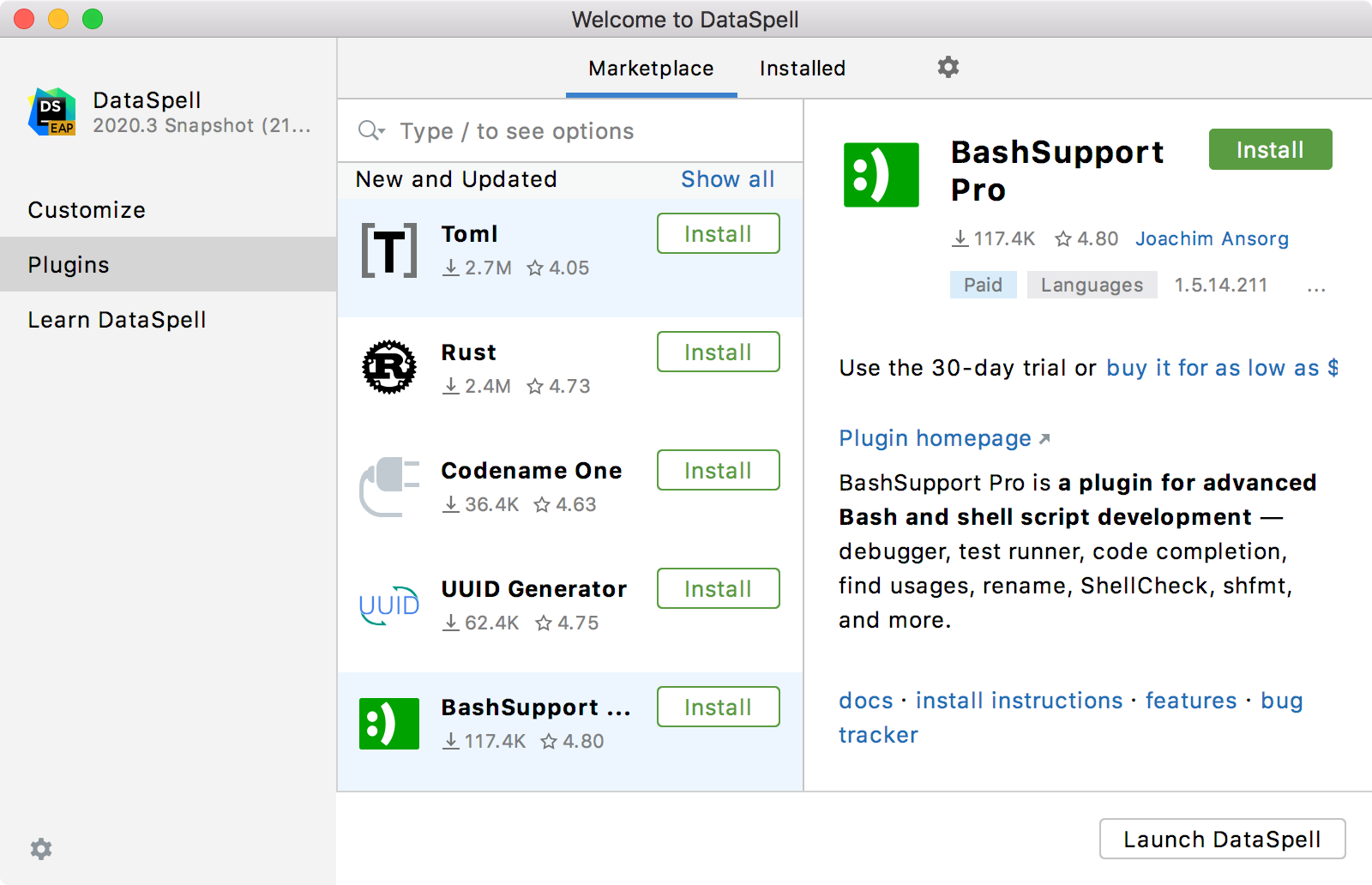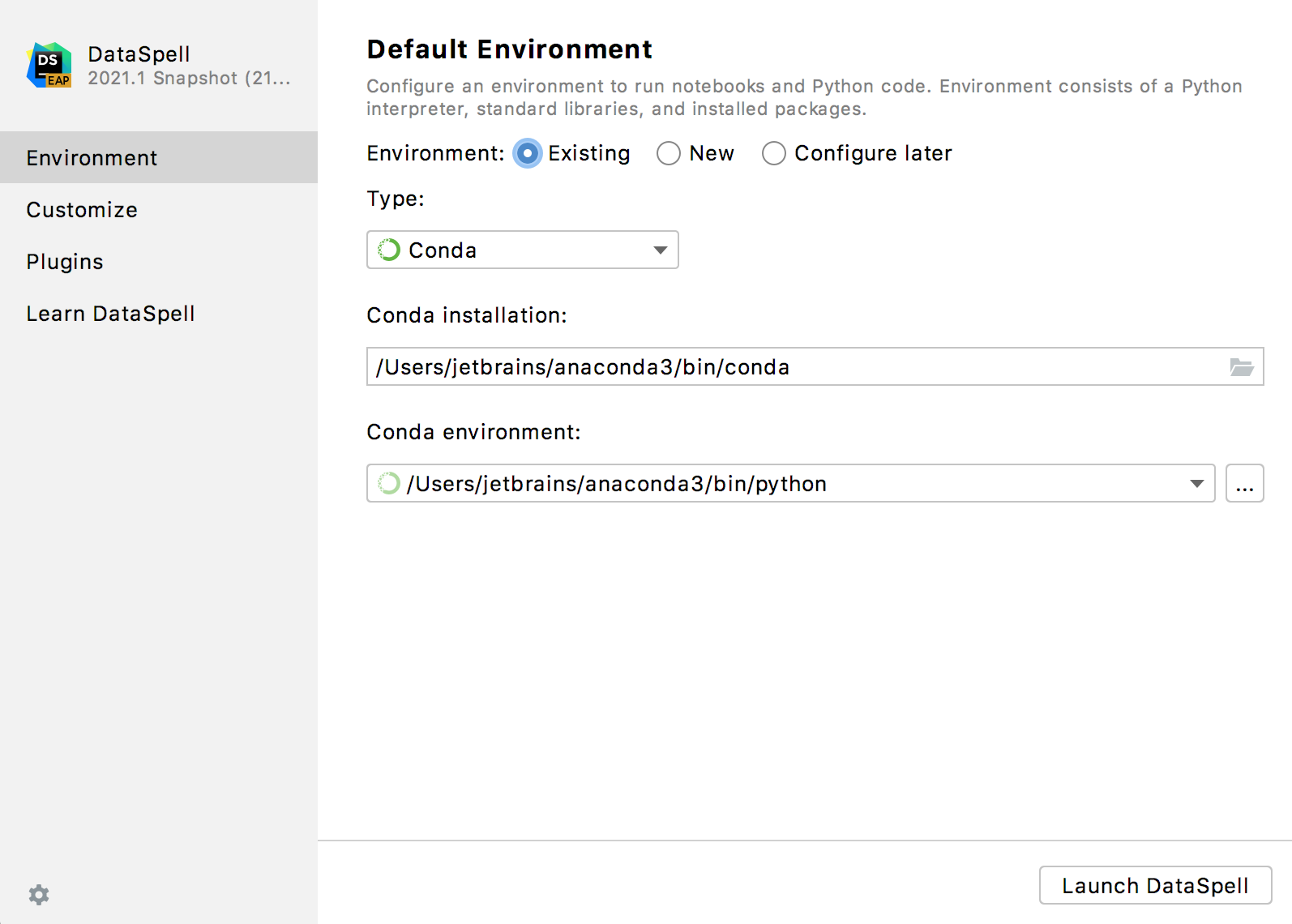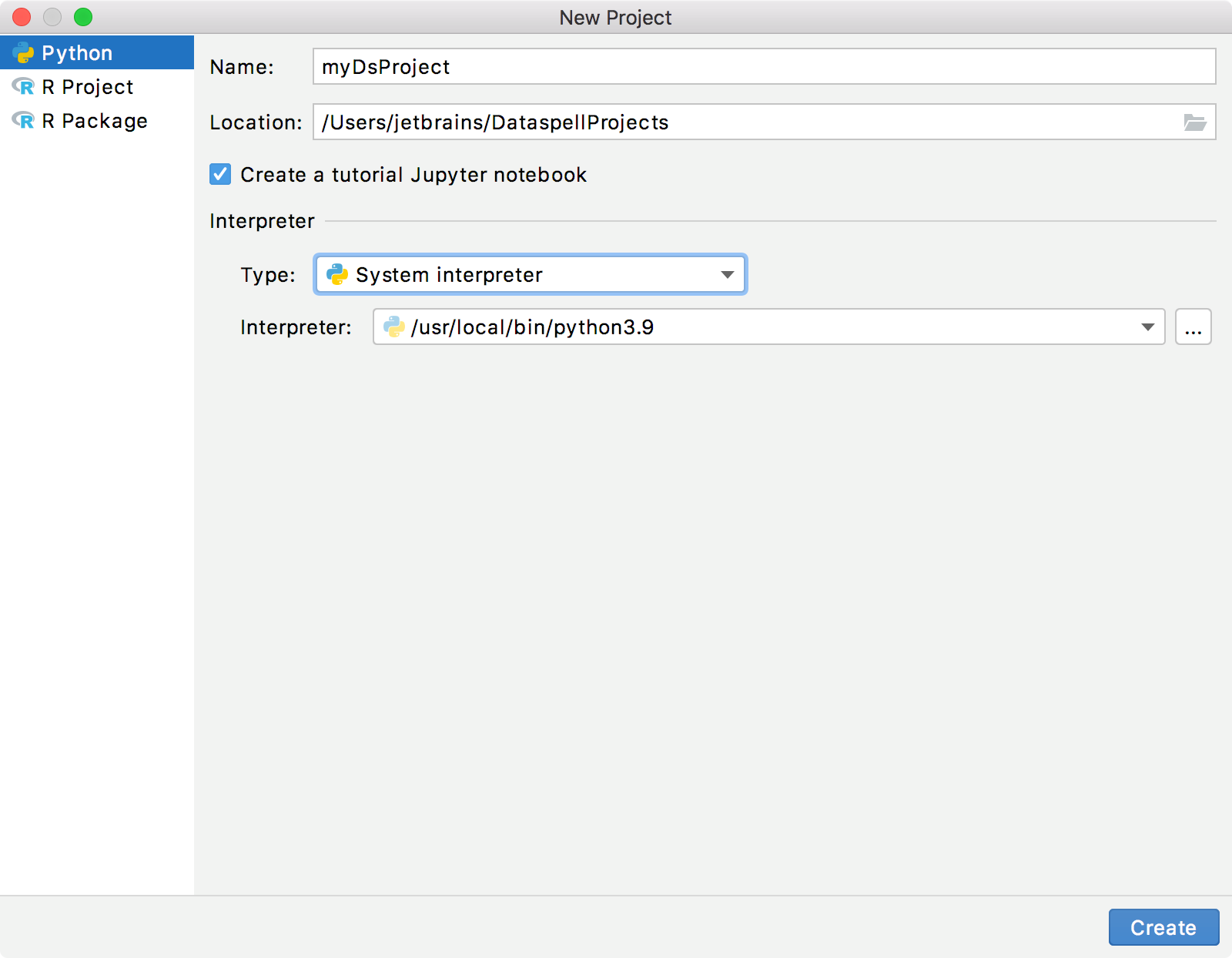Run JetBrains DataSpell for the first time
Running JetBrains DataSpell depends on the operating system:
To run JetBrains DataSpell, find it in the Windows Start menu or use the desktop shortcut. You can also run the launcher batch script or executable in the installation directory under bin.
Run the JetBrains DataSpell app from the Applications directory, Launchpad, or Spotlight.
Run the dataspell.sh shell script in the installation directory under bin. You can also use the desktop shortcut, if it was created during installation.
When you run JetBrains DataSpell for the first time, some steps are required to complete the installation, customize your instance, and start working with the IDE.
Once you launch JetBrains DataSpell, you will see the Welcome screen, the starting point to your work with the IDE, and configuring its settings. This screen also appears when you close all opened projects. Use the tabs on the left side to switch to the specific welcome dialog.
Select the user interface theme
Select whether you want to use the default Darcula or Light theme.

For more information, see User interface themes.
Disable unnecessary plugins
JetBrains DataSpell includes plugins that provide integration with different version control systems and application servers, add support for various frameworks and development technologies, and so on. To increase performance, you can disable plugins that you do not need. 
You can click the Disable All link for each group of plugins to disable them all, or Customize to disable individual plugins in the group.
Configure an environment for the workspace
When you run JetBrains DataSpell for the very first time, it suggests configuring an environment for the default workspace.

The workspace is a directory that contains all your notebooks and local datasets. You can attach other directories and projects to the workspace.
An environment is required to execute local notebooks.
The following steps depend on your choice:
Select any of the existing Conda interpreters. Alternatively, click
 and specify a path to the Conda executable in your file system, for example, C:\Users\jetbrains\Anaconda3\python.exe.
and specify a path to the Conda executable in your file system, for example, C:\Users\jetbrains\Anaconda3\python.exe.Specify the location of the new Conda environment in the text field, or click
 and find location in your file system. Note that the new Conda environment target directory must be empty!
and find location in your file system. Note that the new Conda environment target directory must be empty!Select the Python version from the list.
Specify the location of the Conda executable file in the text field, or click
 and find location in the Conda installation directory. You're basically looking for a path that you've used when installing Conda on your machine, for example, C:\Users\jetbrains\Anaconda3\python.exe.
and find location in the Conda installation directory. You're basically looking for a path that you've used when installing Conda on your machine, for example, C:\Users\jetbrains\Anaconda3\python.exe.
Select any of the existing interpreters. Alternatively, click
 and specify a path to the Python executable in your file system, for example, C:\Python36\python.exe.
and specify a path to the Python executable in your file system, for example, C:\Python36\python.exe.Specify the location of the new virtual environment in the text field, or click
 and find location in your file system. Note that the directory where the new virtual environment should be located, must be empty!
and find location in your file system. Note that the directory where the new virtual environment should be located, must be empty!Choose the base interpreter from the list, or click
 and find a Python executable in the your file system.
and find a Python executable in the your file system.If JetBrains DataSpell detects no Python on your machine, it provides two options: to download the latest Python versions from python.org or to specify a path to the Python executable (in case of non-standard installation).

In the Interpreter field, type the fully-qualified path to the required interpreter executable, or click
and in the Select Python Interpreter dialog that opens, choose the desired Python executable and click OK.
If JetBrains DataSpell detects no Python on your machine, it provides two options: to download the latest Python versions from python.org or to specify a path to the Python executable (in case of non-standard installation).

You will need administrator privileges to install, remove, and upgrade packages for the system interpreter. When attempting to install an interpreter package through an intention action, you might receive the following error message:

As prompted, consider using a virtual environment for your project.
Once you configure an environment, click Launch DataSpell. JetBrains DataSpell creates a workspace so that you can start your work.